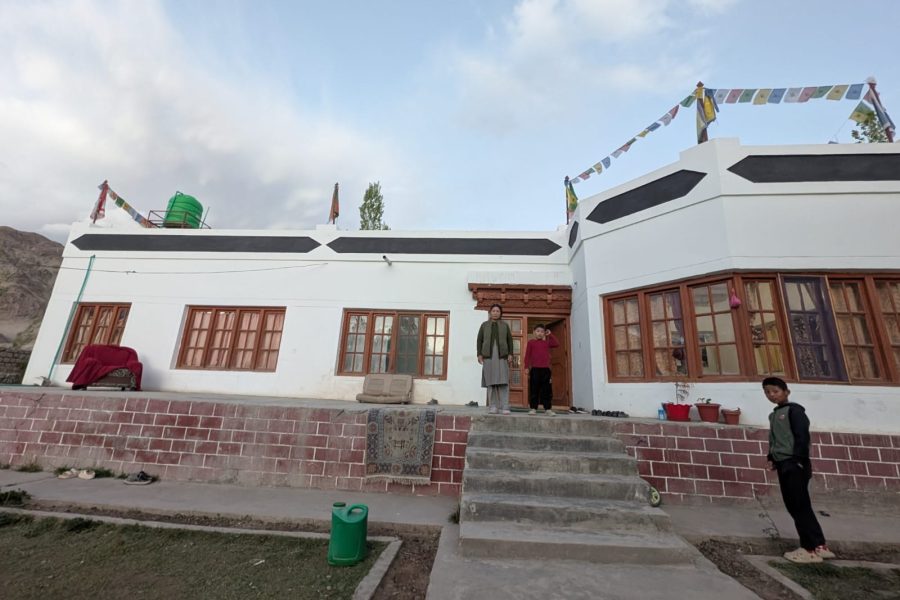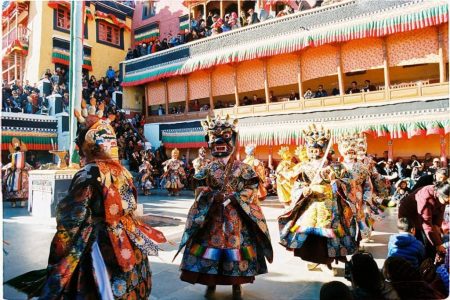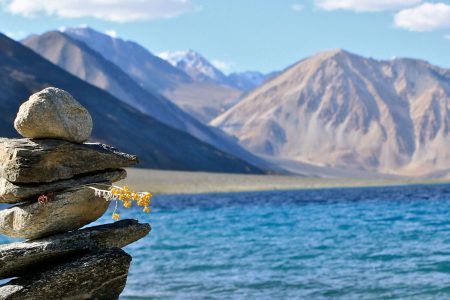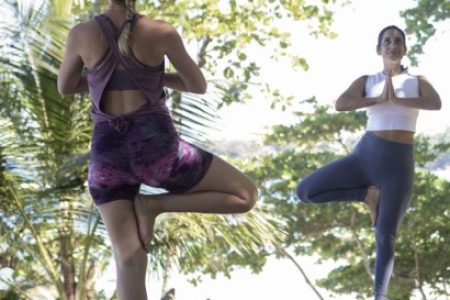Thiksey Monastery is known for its stunning architecture, which includes a combination of Tibetan Buddhist designs, prayer rooms, chapels, and a massive statue of Buddha. The monastery’s architectural style closely mirrors that of the Potala Palace in Lhasa, making it an iconic site in Ladakh.
- The Main Assembly Hall (Dukhang)
- The main assembly hall, or Dukhang, is the focal point of the monastery. It is used for prayer ceremonies, meditations, and monastic gatherings. The hall contains intricately painted murals of Buddhist deities, mandalas, and stories from the Buddha’s life.
- Inside the hall is a large golden Buddha statue, which is one of the most notable features of the monastery.
- The 15-Meter Buddha Statue
- One of the most famous and imposing features of Thiksey Monastery is the 15-meter (49 feet) statue of Maitreya Buddha. This magnificent statue is housed in the monastery’s Maitreya temple and is one of the tallest statues in Ladakh.
- The Maitreya Buddha represents the future Buddha and is a symbol of hope and peace for the people of Ladakh. The statue is intricately decorated with gold and brightly colored murals, adding to its spiritual and artistic significance.
- The Monastery Complex
- The monastery has several chapels, prayer rooms, and shrines dedicated to various Buddhist deities. These areas are adorned with painted scrolls (thangkas), buddhas, and religious icons.
- Thiksey is also home to a **large collection of sacred manuscripts and Buddhist texts, which are housed in the monastery’s library. This makes it an important center of learning for Buddhist scholars.
- The Roof and Courtyards
- The roof of the monastery offers stunning views of the surrounding landscape, including Leh, the Indus Valley, and the Himalayan ranges. The wide courtyards provide space for outdoor meditation and pilgrimage rituals.
Spiritual Peace:
Thiksey Monastery offers a serene and peaceful environment, perfect for meditation and spiritual reflection. Its elevated position atop a hill provides a tranquil escape from the outside world, where visitors can connect with their inner selves amidst the sounds of Buddhist chants and the calming atmosphere of the monastery.
Cultural Immersion:
Thiksey Monastery is a significant center of Tibetan Buddhism in Ladakh. Visitors can immerse themselves in the rich Buddhist culture, explore the monastery’s stunning architecture, and witness the monastic life of the resident monks. The monastery’s religious practices, rituals, and its historical significance provide an enriching experience of Ladakhi spiritual traditions.
Scenic Views:
The monastery offers panoramic views of the surrounding Indus Valley, with its lush green fields and the majestic snow-capped mountains in the background. The contrast of the vibrant monastery against the stark, barren landscape below creates a mesmerizing view, making it a favorite spot for photographers and nature enthusiasts.







